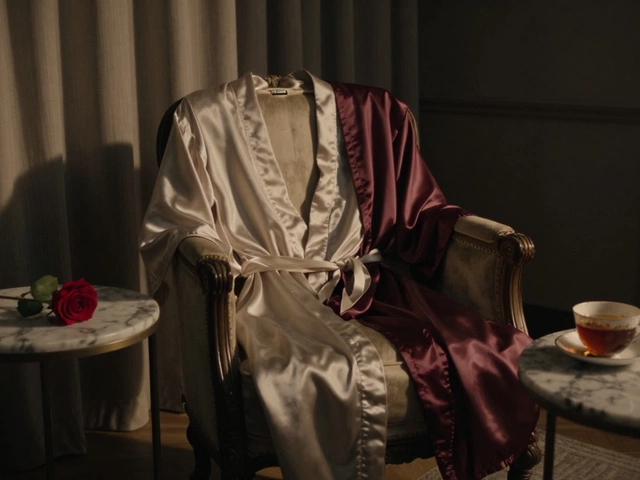Ice and Appliances: An Indispensable Duo
If you live in sunny Perth like me, you know that having a refrigerator that makes ice is not just a luxury—it's practically a necessity. An icy cold glass of lemonade while lounging in the backyard on an Australian summer day is as good as it gets. But what happens when that trusty ice maker stops functioning, and the icy treasure trove within your refrigerator freezes up? There's nothing worse than reaching out for an ice cube on a hot day and finding none. Let's dig in and see why this icy disaster might be happening.
Frosty Functionality: Understanding How Your Ice Maker Works
Before we understand why an ice maker stops producing those delightful frozen cubes, we must first understand how it works. The ice making process starts when the electronic control board signals the water inlet valve to open. This allows water to flow into the ice mold, where it begins to freeze. Simple, right? Not always. Things can go wrong even in this straightforward process, causing your ice maker to stop working. These issues might range from a faulty valve to a dysfunctional control board.
As you sip on that refreshing iced beverage, remember that there's a tiny factory in your fridge, tirelessly churning out these little chilly delights. It's a process of freezing, ejecting, and refilling that never stops until you switch off your refrigerator or until you run out of water. It's a beautiful symphony of technology, water, and low temperature, all collaborating to create something we often take for granted—ice!
Water Woes: Is Your Fridge Hydrated Enough?
It's ironic, but dehydration can affect your fridge too. The most common reason for an ice maker to stop working is due to insufficient water flow to the ice maker. If the water line is blocked or the water pressure is too low, the water inlet valve can't fill the ice mold. Even minor kinks in the water line can disrupt the flow and halt ice production. A friendly tip from your buddy Jenson—always keep an eye on your refrigerator’s water supply. No water, no ice.
Moreover, if your water filter hasn't been changed in a while, this can also lead to poor performance from your ice maker. A clogged water filter restricts the flow of water, causing the ice cubes to be small, malformed, or even non-existent. The rule of thumb is to change your water filter every six months to prevent any ice-making complications. A well-hydrated fridge is a happy fridge, my friends.
A Chill-Deficit Dilemma: Is Your Freezer Cold Enough?
If your refrigerator isn’t cold enough, it can’t freeze the water into ice. The ideal freezer temperature to produce ice is -18°C. If your freezer is too warm, it’s going to leave your ice maker high and dry. Strange as it may sound, your refrigerator could be chilling out a little too much. Freezing temperatures that are too low can also make the ice maker go kaput. You see, if the temperature drops drastically, the water can freeze faster and be stuck in the water line, thereby halting ice production. The key is to maintain a balance. Think Goldilocks—just right!
Remember, even a small fluctuation of the designated fridge temperature can lead to decreased ice production or even malfunction. Regularly checking your refrigerator's temperature levels can help prevent this issue. A fun little fridge hack? Stick a thermometer in a glass of oil and place it in the freezer. After 24 hours, check the temperature. Why oil? It won’t freeze, yet it can accurately reflect the internal temperature of your freezer.
Calling Circuit City: Dealing with Electrical Issues
Every once in a while, your ice maker might face a mini electric apocalypse. This could happen due to wiring, sensor, or motherboard issues. The wiring might be faulty, the freezer sensor could malfunction, or the motherboard might decide to retire early—send it a gold watch. If there's any kind of electrical issue, your ice maker will stop producing ice, no matter how much you plead.
While electrical components can wear down over time, they can also be affected by power surges or sustained power interruptions. Unplugging the refrigerator for a few minutes and plugging it back in can sometimes give this electrical marvel a much-needed kickstart. If that doesn't work, it's probably time to call in a professional. Unless of course, you are one, in which case, I applaud your handy skills.
Ice Ejection Rejection: When Ice Gets Stuck
The final act in the ice-making performance is ejecting the ice cubes into the bin. However, sometimes the ice maker's control arm can get stuck in the extended position, making the ice machine think it’s full and stopping ice production.
Another common issue is frozen ice cubes that refuse to drop from the mold. This could be due to a broken motor or a misalignment of parts within the ice maker. The remedy could be as simple as defrosting your freezer or reaching out to a trusty appliance repair company.
Ice Maker Adventures: Jenson's Brush with a Non-Ice Making Refrigerator
As to my personal encounters with mischievous ice makers, reminiscent of a summers day, a couple of years ago. The sun shining in infuriatingly hot waves, and a young Jenson, eager for respite from the heat, turned to the trusted ice maker. Lo and behold, there was no ice! That day marked an educational journey into the fascinating, sometimes frustrating, world of ice maker troubleshooting. The culprit that day? A sneaky kink in the water line. The savior of the day? My trusty toolbox and a quick call to my brother-in-law, Pete, who's an appliance repair wizard.
So there you have it, folks - a friendly dive into the icy depths of refrigerator freezers and why those little ice cube commandos sometimes stage a revolt. Remember to stay cool, keep your fridge hydrated, maintain its icy temperament, and never overlook the function of those intricate electronic components. Ice or no ice, I hope your day is as refreshing as a tall glass of lemonade on a Perth summer day!






